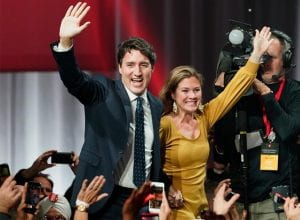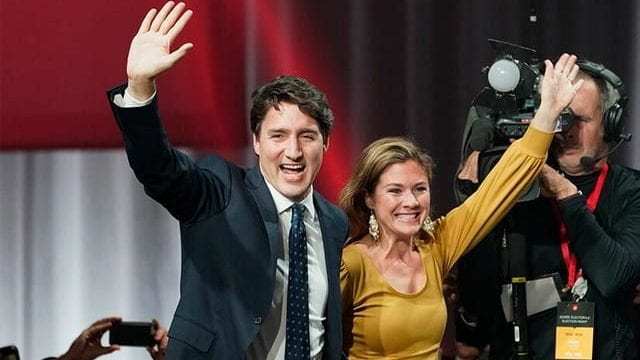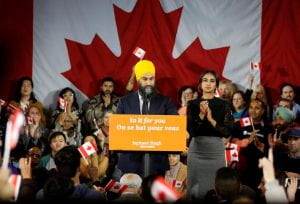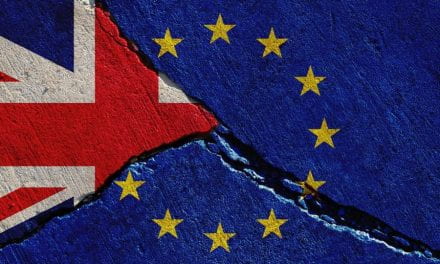Canada’s October election determined that Trudeau’s Liberal government would remain in power, but with a minority government.

Re-elected Prime Minister Justin Trudeau celebrating his win with supporters, though it was not the outcome people hoped for. (Photo: The Canadian Press)
The race between the Liberal and the Conservative parties remained close the entire race. The night before the election, the poll predictions had only a 0.1 per cent difference between the two parties in regards to votes.
Reported in the final hours of the ballots being counted by The Canadian Broadcasting Company (CBC), it was expected that the Liberals will win 156 seats, and the Conservatives are expecting 122. The final results as reported by The Guardian were 157 Liberal and 121 Conservative.
The Liberals won their 157 seats with 5,199,588 total votes, while The Conservatives received 6,150,177 total votes.
Conservatives received the majority of the votes from the Prairies; Alberta where they earned approximately 70 per cent of votes, and Saskatchewan where they took approximately 65 per cent of the vote.
The Liberal party secured the win with Ontario, where they were expected to win 77 seats, Quebec with around 40 seats, and Atlantic Canada where they took 26 seats.
The New Democratic Party (NDP) lost 15 seats from the previous government. That leaves them now with 24 seats total. This is only a few less than Bloc Québécois who won 32 seats.
The Green Party saw some success as they had their first elected official outside of British Columbia- Jenica Atwin in Fredericton, New Brunswick- bringing the parties’ representatives- up to three in the House of Commons.
In comparison to the previous election in 2015, the Liberals, who won a majority government, lost 6.5 per cent of votes, only getting 33 per cent of votes this election. The Conservatives on the other hand jumped up 2.5 per cent from last election, now at 34 per cent of votes.
The Liberals lost many votes across the country, massively in Alberta and Saskatchewan, where they will have no members sitting on the benches. According to CBC, three-quarters of the Liberal government will come from two provinces; Ontario and Quebec.
A minority government for Trudeau will mean that for anything to get done within the House of Commons, he will have to work with at least one member of an opposing party.
Trudeau and Singh, the NDP leader, did speak post-election but Singh did not say what they spoke about. What is known to the public that Singh, and the NDP’s hold the “balance of power” as the CBC called it. They are the middle man, and for Trudeau to have a successful minority government, he will need the support of the NDP. Trudeau has said he will not be doing a coalition government which many people thought he would post-election, but he will still be seeking the NDP, and other parties support.
Andrew Sheer, the Conservative leader, put Trudeau on notice during his concession speech on the night of October 21st.

Andrew Sheer giving his concession speech where he, and the Conservative party, put Trudeau on notice. (Photo: CBC
“Tonight, Conservatives have put Justin Trudeau on notice, and Mr Trudeau when your government falls, Conservatives will be ready and we will win,” he said.






